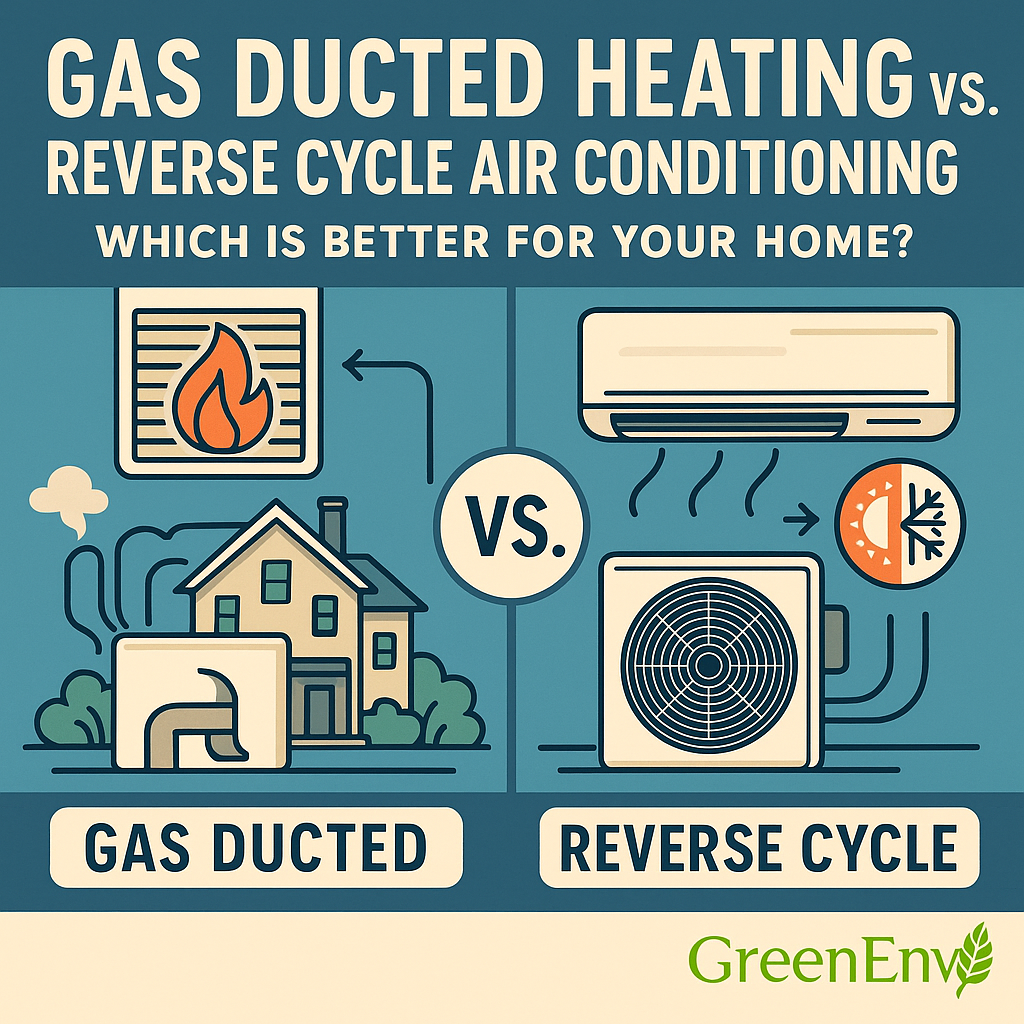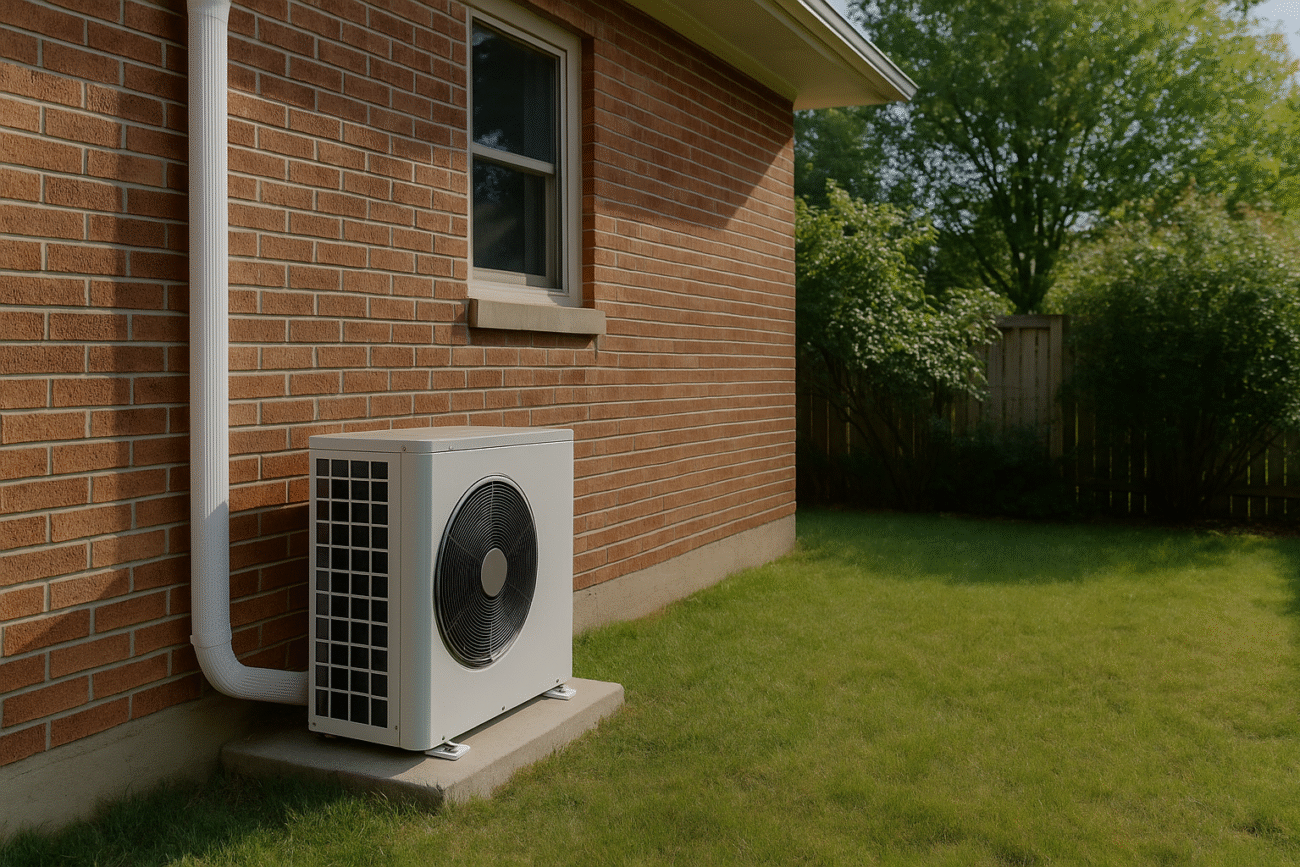Understanding Gas Ducted Heating and Reverse Cycle Air Conditioners
Gas ducted heating and reverse cycle air conditioning are two popular systems used in Australian homes for temperature control. Each system operates differently and utilizes distinct energy sources, leading to varying efficiency ratings. Understanding these differences is crucial for homeowners considering a switch for energy savings.
Gas ducted heating relies on natural gas or LPG as its primary energy source. The system works by using gas to heat air, which is then distributed throughout the home via a network of ducts. Typically, the heating unit is located outside or in a central part of the house, drawing in air to warm it before sending it through the ducts. This process is generally efficient in terms of energy use during the colder months, offering a reliable source of warmth. However, it is important to consider the rising costs of gas and the environmental impact associated with fossil fuels when evaluating this option.
On the other hand, reverse cycle air conditioners serve both heating and cooling needs. They operate by transferring heat from the outside air to the inside during winter and vice versa in summer. This versatility allows homeowners to maintain a comfortable indoor climate year-round. Reverse cycle units can be powered by electricity, typically making them more suitable for regions where electricity is generated from renewable sources, thereby reducing their carbon footprint. Modern reverse cycle systems are designed to be highly energy-efficient, with many units featuring inverter technology that adjusts the cooling and heating output according to the desired temperature.
When comparing these systems, efficiency ratings play a significant role in determining their operational costs. Gas ducted heating systems can have fuel efficiency ratings expressed in terms of star ratings, while reverse cycle air conditioners are often evaluated using the Energy Efficiency Ratio (EER) and Seasonal Energy Efficiency Ratio (SEER). Understanding these metrics is essential for making a well-informed decision regarding heating and cooling solutions in Australian homes.
The Financial Implications of Switching
When considering the transition from gas ducted heating to reverse cycle air conditioning, it is crucial to conduct a thorough cost analysis to fully understand the financial implications. Initially, the installation costs of reverse cycle air conditioning systems can vary widely depending on the unit’s capacity, the complexity of the installation, and any required modifications to existing infrastructure. On average, homeowners can expect to pay between $3,000 to $8,000 for a full system installation. However, this investment can lead to significant long-term savings through reduced energy bills.
Monthly energy bills represent a major factor in the overall financial impact of switching systems. Reverse cycle air conditioners are known for their energy efficiency, particularly compared to traditional gas systems. With the increasing global focus on energy efficiency, many reverse cycle models achieve high Star Ratings, prompting lower operating costs. Homeowners can anticipate a potential reduction in their monthly energy bills by approximately 30-50% when changing to an efficient reverse cycle system. This can translate to substantial savings over several years.
In addition, various government incentives or rebates are available for homeowners looking to upgrade to more energy-efficient heating systems. Several Australian states and territories offer financial assistance or installation rebates for qualified reverse cycle air conditioning units. These programs aim to encourage energy efficiency and reduce reliance on fossil fuels, thus potentially ameliorating the upfront costs associated with the switch.
- Upfront installation cost: Generally between $3,000 to $8,000 depending on the specifics of the unit and installation.
- Lower monthly energy bills: Expected reduction of 30-50% compared to gas ducted heating.
- Potential government incentives: Available rebates for energy-efficient upgrades in many regions.
By thoroughly evaluating these financial aspects, homeowners can make informed decisions and gain insights into the potential real energy savings when switching from gas ducted heating to reverse cycle air conditioning.

Environmental Impact and Energy Efficiency
The transition from gas ducted heating to reverse cycle air conditioners raises important environmental considerations, particularly in the context of energy consumption and carbon emissions. Gas heating systems primarily rely on fossil fuels, which contribute to greenhouse gas emissions and climate change. In contrast, reverse cycle air conditioners use electricity, which can increasingly be sourced from renewable energy options like solar, wind, and hydroelectric power.
As Australia continues to expand its renewable energy infrastructure, the environmental impact of using electricity compared to gas is expected to diminish significantly. To evaluate the effectiveness of heating systems, it is essential to consider their energy efficiency ratings. The energy efficiency of reverse cycle air conditioners is indicated through their Energy Efficiency Ratio (EER) and Coefficient of Performance (COP). These ratings measure the units’ cooling and heating outputs concerning the energy they consume.
Generally, reverse cycle systems demonstrate superior energy efficiency, typically outperforming gas ducted systems. Higher efficiency ratings not only translate to lower energy consumption but also lower carbon footprints, making them a more sustainable choice for heating and cooling in Australian homes. Furthermore, consumers are increasingly prioritizing sustainability in their purchasing decisions. As awareness of climate change and energy costs grows, many individuals opt for systems perceived as environmentally friendly.
Switching to reverse cycle air conditioners not only supports the shift towards a more sustainable energy landscape but also encourages broader adoption of renewable energy sources, ultimately benefiting the environment.
Conclusion and Recommendations
Switching from gas ducted heating to reverse cycle air conditioning offers Australian homeowners improved energy efficiency, lower utility bills, and a reduced environmental impact. These systems provide both heating and cooling, making them a cost-effective, year-round solution.
When choosing a reverse cycle unit, homeowners should consider the size of their space and opt for models with high Energy Efficiency Ratios (EER) and Coefficients of Performance (COP) for optimal savings. Proper installation and routine maintenance—like filter cleaning—are essential to maintain performance and longevity.
Integrating smart thermostats can further optimize energy use and comfort. Visual comparisons and energy-saving illustrations can also support informed decision-making.
Overall, upgrading to reverse cycle air conditioning aligns with both eco-conscious and budget-friendly goals.

